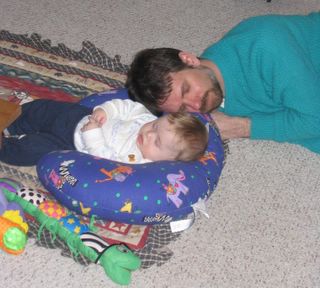Last Friday was bring your kid to work day at Pitney Bowes. It's all very fun, begins with breakfast and a magic show, followed by tours for the older kids, then a big outdoor picnic. I was a tour stop, "Let's Travel to India." They put the kids in groups by age, since some of the stops are better for older or younger ones...I ended up with groups ranging from about 8-13 years old. It was fun but exhausting. I figured the point was more fun than educational, so pretty much I set up a slide show to talk about the fact that we invent stuff by understanding how people live and work, and asking what they knew about India. Answers: lots of people, cows...Showed them pics of cellphones, malls and offices and lots of things that look pretty similar in India as in the US, then pictures of things that look different. Fun to see their reactions. They all noticed the Subway in the mall, and they all recognized the well in the village and understood what it was for and that...
I could tell you how many steps make up the streets rising like stairways, and of the degree of the arcades' curves, and what kind of zinc scales cover the roofs; but I already know this would be the same as telling you nothing. The city does not consist of this, but of relationships between the measurements of its space and the events of its past...A description of Zaira as it is today should contain all Zaira's past. -Italo Calvino, Invisible Cities
